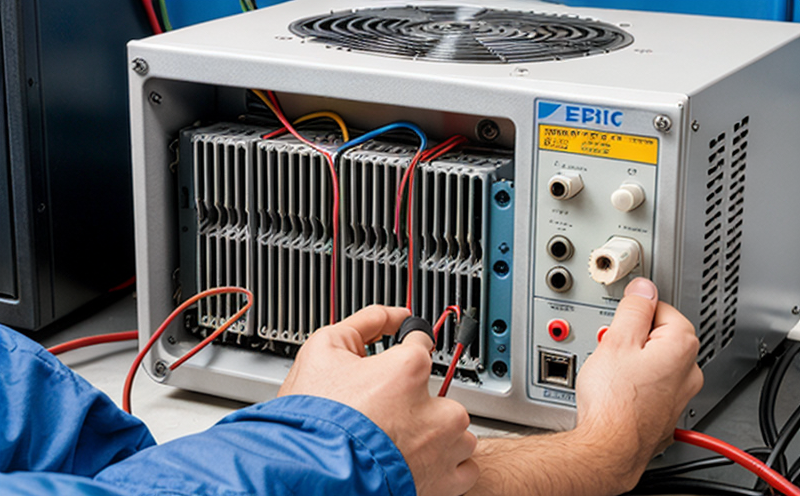IEC 60332-1 Flame Propagation Testing of Marine Cables
The IEC 60332-1 standard is a crucial document for ensuring the fire safety of electrical and electronic equipment, including marine cables. This standard provides essential guidelines to evaluate the flame propagation characteristics of insulation materials used in these cables.
Marine environments present unique challenges that demand rigorous testing protocols. The harsh conditions of saltwater, humidity, and mechanical stress can impact the performance of cable insulation under fire scenarios. To address this need, IEC 60332-1 offers a standardized approach to test whether the materials used in marine cables meet stringent flame resistance requirements.
The testing procedure outlined in IEC 60332-1 consists of several stages designed to simulate real-world conditions and assess the potential for fire spread. The specimen is subjected to controlled conditions that replicate the environment it might encounter during a fire event. This includes exposure to heat, flame impingement, and other relevant factors.
For marine applications, the focus on durability and reliability makes this testing particularly important. In the context of ships, where space is limited and fire can rapidly spread, ensuring that cables do not contribute to the propagation of flames is critical for safety reasons. Compliance with IEC 60332-1 helps manufacturers demonstrate adherence to global standards, thereby enhancing trust among end-users.
The testing process involves precise specimen preparation, which includes cutting samples to specific dimensions and ensuring they are free from defects that could affect the test results. The apparatus used for these tests must be meticulously calibrated to ensure accurate measurements of flame propagation behavior.
Upon completion of the test, detailed reports are generated. These reports document all aspects of the testing process, including observations during the experiment, calculated values such as peak heat release rates, and final classification outcomes based on IEC 60332-1 criteria. The results play a vital role in guiding design improvements and ensuring that products meet both local regulations and international standards.
The importance of IEC 60332-1 cannot be overstated for industries reliant on marine cables, such as maritime transport, offshore oil and gas, and naval vessels. By adhering to this standard, manufacturers can ensure their products not only comply with regulatory requirements but also offer enhanced safety features that contribute to a safer operational environment.
Applied Standards
The IEC 60332-1 standard is part of the broader family of IEC standards for electrical insulation. Specifically, it addresses the flame propagation characteristics of materials used in electric cables and their accessories. The standard is widely recognized and implemented globally due to its rigorous testing procedures which ensure high levels of fire safety.
The application of this standard extends beyond mere compliance; it reflects a commitment to excellence in product design and manufacturing. By incorporating IEC 60332-1 into their quality control processes, companies can differentiate themselves by offering products that meet or exceed the highest international standards.
Compliance with IEC 60332-1 also facilitates easier market entry for manufacturers in various countries. Many jurisdictions require adherence to internationally recognized standards as a condition of certification and approval. By meeting these requirements, companies can streamline their compliance processes and avoid potential delays or barriers during product development.
| Section Number | Description | Objective |
|---|---|---|
| IEC 60332-1: Part 1 | Flame propagation of electric cables and their accessories under specific conditions. | To evaluate the flame propagation characteristics of materials used in marine cables. |
Environmental and Sustainability Contributions
The implementation of IEC 60332-1 not only enhances safety but also contributes positively to environmental sustainability. By ensuring that marine cables do not propagate flames, this standard minimizes the risk of catastrophic fires aboard ships, which could lead to significant environmental damage.
Additionally, by promoting the use of flame-resistant materials, IEC 60332-1 supports a more sustainable approach to product design. Flame-retardant materials are often chosen for their ability to reduce the overall amount of waste generated during manufacturing and disposal processes. This contributes to reduced environmental impact throughout the lifecycle of marine cables.
The standard also encourages continuous improvement in material science, which can lead to innovations that further enhance both safety and sustainability. For instance, advancements made through IEC 60332-1 compliance might result in the development of more efficient materials with lower carbon footprints or better recyclability properties.
By adhering to this standard, manufacturers play a pivotal role in safeguarding marine environments from potential disasters while contributing to broader sustainability goals. This dual benefit underscores the importance of rigorous testing and certification processes like those outlined in IEC 60332-1.
Use Cases and Application Examples
The use cases for IEC 60332-1 are diverse, encompassing various types of marine equipment where electrical insulation is critical. Here are some specific examples:
| Equipment Type | Description |
|---|---|
| Cable assemblies for shipboard power distribution systems | These cables must withstand the stress of continuous operation and occasional fire events. |
| Electrical connections in offshore oil rigs | Ensuring these connections are flame-resistant is vital given their remote location and potential for severe consequences if a fire were to occur. |
| Cables used in naval vessels | In critical military applications, the integrity of cables during fire incidents can determine mission success or failure. |





